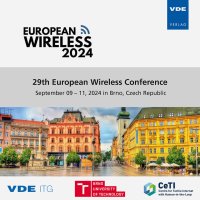Quantum Stereographic K Nearest-Neighbour Clustering
Konferenz: European Wireless 2024 - 29th European Wireless Conference
09.09.2024-11.09.2024 in Brno, Czech Republic
Tagungsband: European Wireless 2024
Seiten: 6Sprache: EnglischTyp: PDF
Autoren:
Jasso, Alonso Viladomat; Modi, Ark; Ferrara, Roberto; Deppe, Christian; Noetzel, Janis; Fung, Fred; Schaedler, Maximilian
Inhalt:
Nearest-neighbour clustering is a simple yet powerful machine learning algorithm that finds natural application in the decoding of signals in classical optical-fibre communication systems. Quantum k-means clustering promises a speed-up over the classical k-means algorithm; however, it has been shown to not currently provide this speed-up for decoding optical-fibre signals due to the embedding of classical data, which introduces inaccuracies and slowdowns. This work proposes the use of the generalised inverse stereographic projection as a pre-processing step to develop a quantum-inspired classical clustering algorithm, and benchmarks its accuracy, runtime and convergence for decoding real-world experimental optical-fibre communication data. This proposed quantum-inspired algorithm provides an improvement in both the accuracy and convergence rate with respect to the k-means algorithm. Hence, this work presents, as a purely classical contribution inspired by quantum algorithms, the use of the general inverse stereographic projection and spherical centroid for clustering M-QAM signals, showing that optimizing the radius yields a consistent improvement in accuracy and convergence rate.


